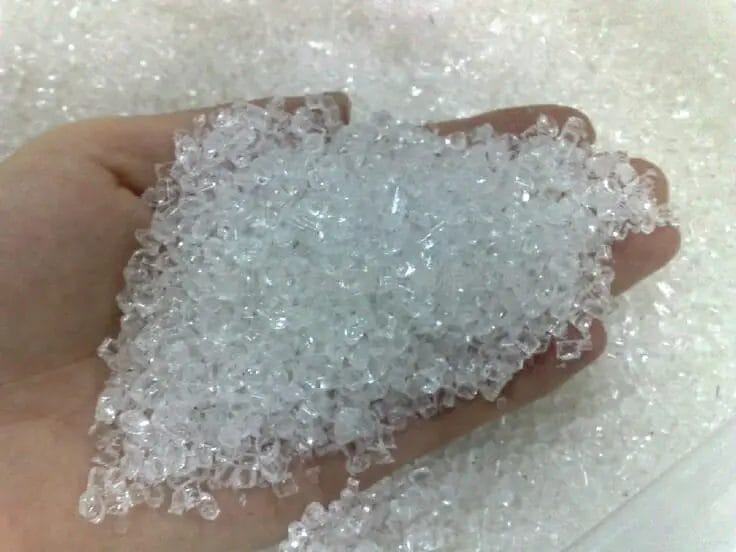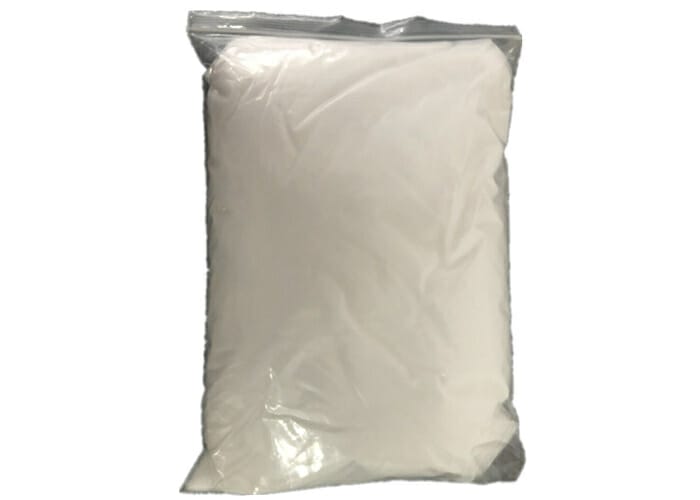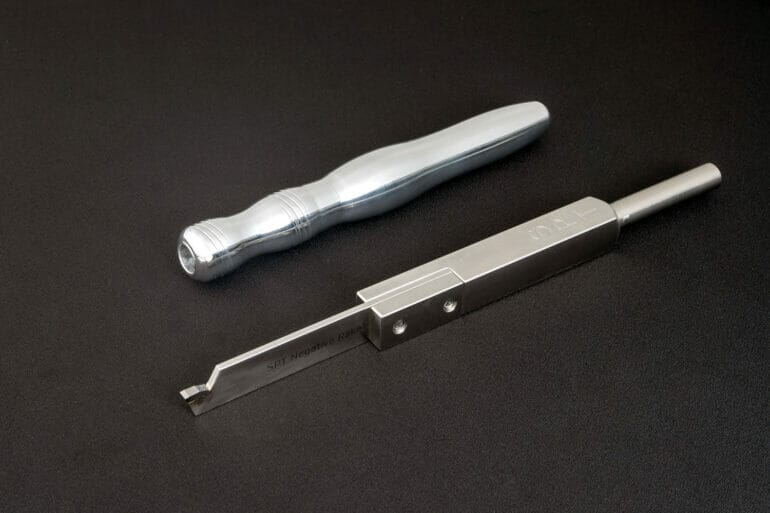While acrylic and resin are often used interchangeably in the art world, they are not exactly the same. Acrylic refers to a type of paint or medium that is composed of acrylic polymer emulsion. On the other hand, resin is a liquid that hardens into a clear, glossy finish. Resin can be made from various materials, including epoxy, polyester, or polyurethane.
Both acrylic and resin offer unique properties and can be used in different applications. Acrylic is known for its fast-drying nature and versatility, making it suitable for painting on various surfaces. Resin, on the other hand, is widely used for creating three-dimensional artworks, jewelry, and coatings due to its excellent clarity and durability.
So while acrylic and resin share some similarities, they are distinct materials with their own characteristics and uses in the art world.

Applications of Acrylic and Resin: Which to Use?
Acrylic and resin are both versatile materials that have various applications across different industries. Depending on your project requirements and desired outcomes, one may be more suitable than the other. In this section, we will explore the applications of acrylic and resin and help you determine which material to use for your specific needs.
1. Acrylic Applications
Acrylic, also known as Plexiglas or Perspex, is a transparent thermoplastic material that offers excellent optical clarity. Here are some common applications where acrylic is widely used:
- Signage and Displays: Acrylic is a popular choice for creating signs, point-of-sale displays, and exhibition stands due to its transparency, durability, and ease of fabrication.
- Interior Design: Acrylic can be used to create various interior design elements such as furniture, partitions, wall panels, lighting fixtures, and decorative pieces. Its versatility allows for unique and creative designs.
- Automotive Industry: Acrylic is utilized in the automotive industry for manufacturing headlights, taillights, interior trim components, and instrument clusters. Its high impact resistance and UV stability make it ideal for these applications.
- Medical Equipment: Acrylic is often used to produce laboratory equipment, medical devices, protective barriers, and display cases for preserving and showcasing medical artifacts.
- Aquariums and Fish Tanks: The excellent optical clarity and water resistance of acrylic make it a popular choice for constructing aquariums, fish tanks, and other aquatic environments.
2. Resin Applications
Resin is a synthetic material that can be molded and shaped into various forms. It offers excellent durability, strength, and chemical resistance. Here are some common applications where resin is commonly used:
- Art and Crafts: Resin is widely used in the art world for creating sculptures, jewelry, and decorative objects. Its ability to capture intricate details and its translucent appearance make it a favored material among artists.
- Construction and Architecture: Resin can be utilized for architectural purposes such as flooring, countertops, decorative elements, and even as a binder for aggregates in concrete.
- Manufacturing and Prototyping: Resin is often used in the manufacturing industry for creating molds, prototypes, and small-scale production parts. Its dimensional stability and ease of replication make it an excellent choice.
- Electronics and Electrical Industry: Resin is commonly used for encapsulating electronic components and circuitry to provide insulation, protection, and stability. It helps prevent moisture, dust, and vibrations from affecting sensitive electrical parts.
- Coating and Finishing: Resin coatings are used to protect and enhance the appearance of surfaces such as wood, flooring, countertops, and artwork. Resin provides a glossy, durable, and scratch-resistant finish.
Choosing Between Acrylic and Resin
When deciding between acrylic and resin for your project, there are a few factors to consider:
- Transparency and Clarity: If optical clarity is crucial for your application, acrylic is the better choice due to its transparency.
- Durability: Both acrylic and resin offer good durability, but resin tends to be more impact-resistant and chemical-resistant.
- Shaping and Molding: Resin provides more flexibility when it comes to molding and shaping complex forms.
- UV Resistance: Acrylic has better UV stability, making it suitable for outdoor applications that require prolonged exposure to sunlight.
- Appearance and Aesthetic: Consider the desired finish, texture, and appearance you want to achieve for your project.
In summary, acrylic is best suited for applications that require transparency, such as signage, displays, and automotive components, while resin is more versatile for artwork, construction, electronics, and prototyping. Assess your project requirements, consult with experts, and make an informed decision based on the specific properties and characteristics of both materials.

Pros and Cons of Acrylic and Resin Materials
When it comes to choosing materials for various applications, two popular options that often come up are acrylic and resin. Both materials have their own unique properties and advantages. In this section, we will explore the pros and cons of acrylic and resin materials to help you make an informed decision for your specific needs.
Acrylic:
Acrylic, also known as Plexiglas or Lucite, is a type of plastic that is widely used in a variety of industries. Here are some of the pros and cons of using acrylic:
Pros:
- Transparency: Acrylic offers excellent transparency, making it a popular choice for applications where optical clarity is essential, such as windows, displays, and signage.
- Lightweight: Acrylic is lightweight compared to glass, making it easier to handle and install. This makes it a preferred choice for applications where weight is a concern.
- Durability: Acrylic is highly durable and resistant to impact, making it less prone to cracks and breakage. It is also resistant to weather conditions, UV radiation, and chemicals, making it suitable for outdoor use.
- Versatility: Acrylic can be easily molded and shaped into various forms, making it a versatile material for a wide range of applications. It can be cut, drilled, machined, and engraved to create custom designs.
- Cost-effective: Acrylic is generally more affordable than other materials like glass or metal, making it a cost-effective choice for many applications.
Cons:
- Scratches: Acrylic is prone to scratches and may require regular maintenance to keep it looking pristine. However, there are scratch-resistant coatings available that can enhance the durability of acrylic.
- Chemical Sensitivity: Acrylic can react with certain chemicals, causing it to become brittle or discolored. It is important to ensure compatibility with the intended environment or application.
- Lower Heat Resistance: Acrylic has a lower heat resistance compared to other materials like glass. It may deform or melt at higher temperatures, limiting its use in certain applications.
- Flammability: Acrylic is flammable and may release toxic fumes when burned. It is important to follow proper safety precautions and consider fire-resistant alternatives in applications where fire risk is a concern.
Resin:
Resin refers to a broad category of materials that are typically made from synthetic compounds. There are different types of resins available, each with its own unique properties. Here are some of the pros and cons of using resin:
Pros:
- Strength and Durability: Resin materials offer excellent strength and durability, making them suitable for various applications that require resistance to impact, weather conditions, and chemicals.
- Flexibility: Resin can be flexible and can be molded into intricate shapes and designs. It allows for creative expression and customization.
- Waterproof: Many resin materials are waterproof, making them suitable for applications where moisture resistance is essential, such as outdoor furniture or marine applications.
- Low Shrinkage: Resin materials typically have low shrinkage rates, ensuring dimensional stability and accuracy in molded parts.
- Easy to Work With: Resin can be easily cast, poured, or molded into various forms, making it a versatile material for artisans, craftsmen, and DIY enthusiasts.
Cons:
- Curing Time: Resin materials require a curing or drying time, which can vary depending on the type of resin used. This may affect production timelines or project completion times.
- Odor and Toxicity: Some resin materials emit strong odors during the curing process and may release toxic fumes. Proper ventilation and safety precautions are necessary when working with certain resin types.
- UV Sensitivity: Certain resin materials may be sensitive to UV radiation and may yellow or degrade when exposed to sunlight. UV-resistant coatings or additives can mitigate this issue.
- Cost: Resin materials can
How to Choose Between Acrylic and Resin for Your Project
Choosing the right material for your project is crucial to its success. When it comes to crafting and creating, two popular options are acrylic and resin. Both materials offer unique properties and have their own advantages and disadvantages. In this section, we will explore the factors to consider when deciding between acrylic and resin for your project.
1. Project Type
The first thing to consider is the type of project you are working on. Acrylic is a versatile material that is commonly used for various applications such as painting, sculptures, and DIY crafts. It can be easily shaped, molded, and engraved, making it ideal for projects that require intricate details.
Resin, on the other hand, is often used for jewelry making, coatings, and casting. It provides a glossy, glass-like finish and is known for its durability. If your project involves creating jewelry pieces or coating surfaces, resin may be the better choice.
2. Application Method
Another factor to consider is the application method. Acrylic can be applied using a paintbrush, airbrush, or sponge, making it suitable for both small and large-scale projects. It dries quickly and can be layered to create textured effects.
Resin, on the other hand, requires mixing two components together and pouring it into a mold. It takes longer to cure and requires careful measurement and mixing. If you are comfortable with the process and have the necessary equipment, resin can be a great option for achieving a smooth, glass-like finish.
3. Durability
When it comes to durability, both acrylic and resin have their own strengths. Acrylic is known for its impact resistance and is less likely to crack or break. It is also resistant to UV light, making it suitable for outdoor projects.
Resin, on the other hand, is highly durable and provides a protective layer that can withstand wear and tear. It is also resistant to UV light and yellowing over time. If your project requires a high level of durability, such as coating a tabletop or creating jewelry, resin may be the better choice.
4. Cost
The cost is another important factor to consider when choosing between acrylic and resin. Acrylic is generally more affordable, making it a popular choice for beginners and those on a budget. It is widely available in art supply stores and comes in various colors and finishes.
Resin, on the other hand, can be more expensive, especially if you require a large quantity or specialized types. It is important to factor in the cost of additional equipment, such as molds and mixing tools, when considering resin for your project.
5. Safety Precautions
Lastly, it is important to consider the safety precautions associated with each material. Acrylic paints and mediums can contain chemicals that may be harmful if ingested or inhaled. It is important to work in a well-ventilated area and follow the manufacturer’s instructions for safe handling.
Resin, on the other hand, requires careful handling and mixing. The chemicals used in resin can be toxic if not used properly. It is important to wear gloves, goggles, and a mask when working with resin and to follow the safety guidelines provided by the manufacturer.
In Summary
When choosing between acrylic and resin for your project, consider factors such as the project type, application method, durability, cost, and safety precautions. Acrylic is a versatile material suitable for various applications, while resin provides a glossy, durable finish. Consider your specific project requirements and make an informed decision based on your needs and budget.
Tips for Working with Acrylic and Resin Materials
Acrylic and resin materials are popular choices for artists, crafters, and DIY enthusiasts due to their versatility and ability to create stunning finished products. Whether you’re a beginner or experienced in working with these materials, here are some tips to help you achieve the best results:
1. Choose the Right Materials
Before starting your project, ensure that you have the appropriate materials for working with acrylic and resin. Acrylic paints and resin can be found in various forms, such as tubes, jars, and bottles. Select high-quality products that are specifically formulated for the desired application, whether it’s painting, casting, or coating.
2. Prepare Your Workspace
Creating a suitable workspace is essential for a successful acrylic and resin project. Ensure that your working area is clean, well-ventilated, and free from dust or debris. Cover your work surface with a non-stick mat or plastic sheet to protect it from spills or drips. Additionally, wear protective gear, such as gloves and goggles, to prevent any contact with the materials.
3. Measure and Mix Accurately
When working with resin, proper measurement and mixing are crucial for achieving the desired results. Follow the manufacturer’s instructions regarding the resin-to-hardener ratio and mixing time. Use graduated measuring cups or a digital scale to ensure accurate measurements. Thoroughly mix the components until they are fully combined, scraping the sides and bottom of the container to avoid any uncured resin.
4. Take Time for Proper Application
Whether you’re painting with acrylics or pouring resin, taking your time during the application process is essential. Use appropriate brushes or tools for painting to achieve smooth and even coats. When pouring resin, work in thin layers and allow each layer to cure completely before adding additional layers. This will help prevent any bubbling or uneven surfaces.
5. Experiment and Learn from Mistakes
Working with acrylic and resin materials is a continuous learning process. Don’t be afraid to experiment with different techniques, colors, and effects. It’s normal to make mistakes along the way, but these can provide valuable learning opportunities. Take note of what worked well and what didn’t, and use this knowledge to improve your future projects.
6. Properly Seal and Finish
After your acrylic or resin project is complete, it’s important to properly seal and finish it to protect the surface and enhance its appearance. Apply a clear coat or varnish specifically designed for use with these materials. This will help prevent yellowing and provide a glossy or matte finish, depending on your preference.
7. Clean and Maintain Your Tools
Regularly clean and maintain your brushes, mixing containers, and other tools used for working with acrylic and resin. Acrylic paint can be cleaned with water, while resin should be cleaned with isopropyl alcohol or a resin cleaner. Proper tool maintenance will ensure their longevity and allow you to create beautiful pieces for years to come.
Working with acrylic and resin materials can be a rewarding and enjoyable experience. By following these tips, you’ll be well-equipped to tackle your next project with confidence and create stunning works of art or functional pieces.
FAQs
Is acrylic the same as resin?
No, acrylic and resin are not the same. Acrylic is a type of plastic made from a synthetic polymer, while resin is a viscous substance derived from plants or synthetically produced. Resin is often used as a medium for creating artwork or as a casting material, while acrylic is commonly used in paints, coatings, and various other applications.
Conclusion
In conclusion, while acrylic and resin may have some similar properties, they are not the same. Acrylic is a type of plastic that is transparent and comes in many colors, commonly used in art and crafting. On the other hand, resin is a substance that hardens into a clear, glossy finish, frequently used for coating and sealing. Although both acrylic and resin can be used in various applications, their differences lie in their composition and purpose. So, whether you are working on a painting or creating a glossy surface on your artwork, understanding the distinction between acrylic and resin is crucial for achieving the desired result.

